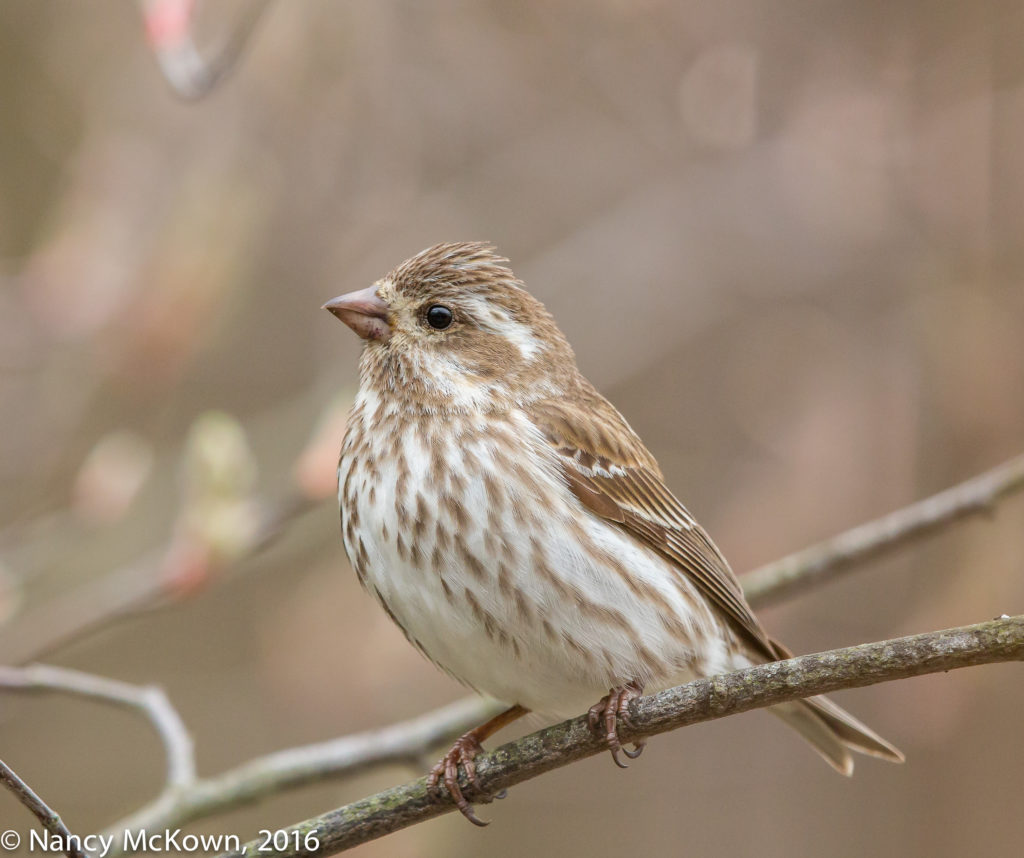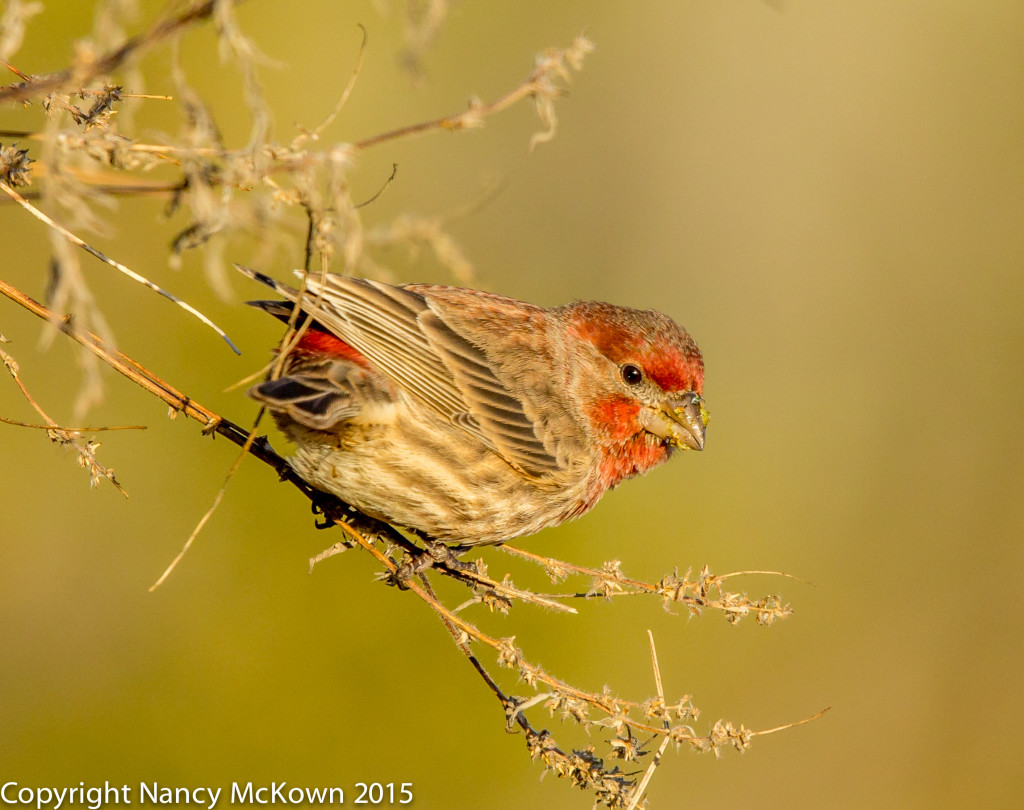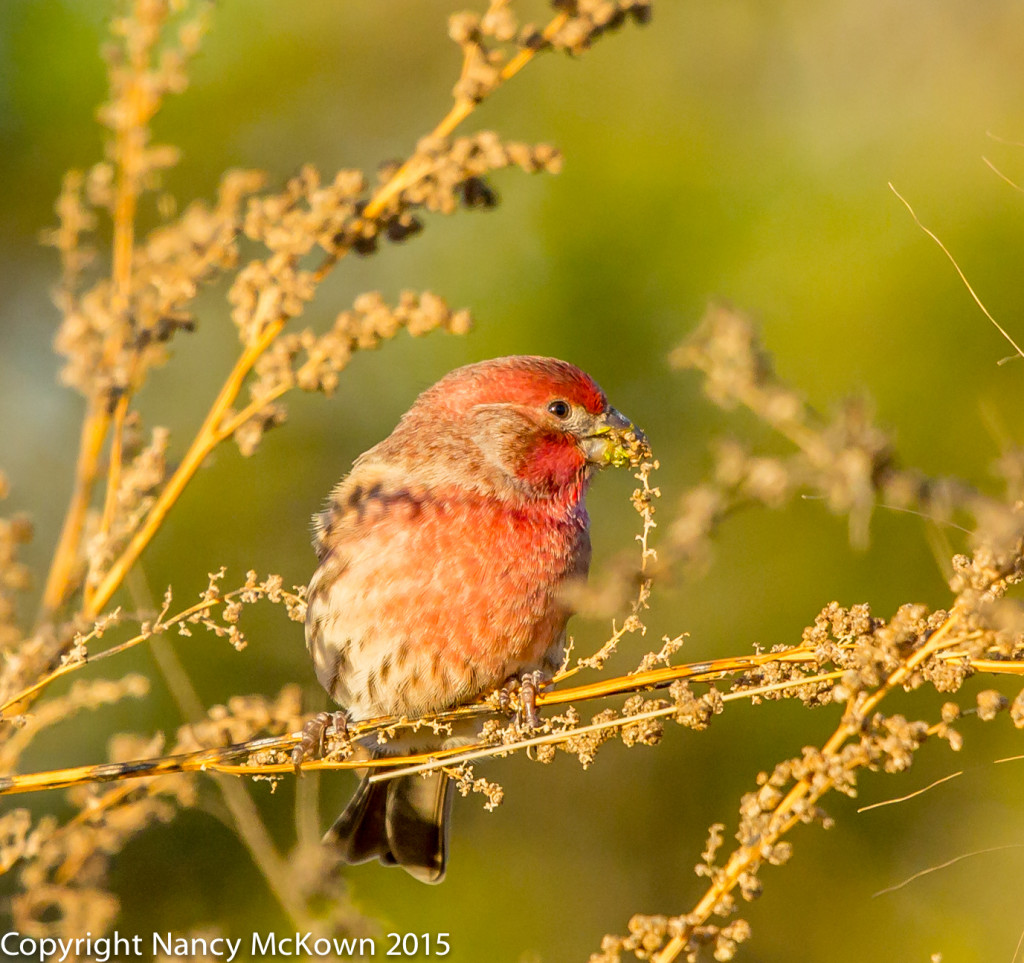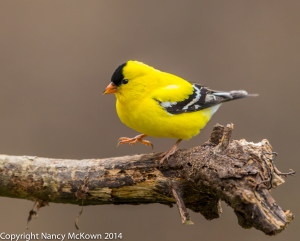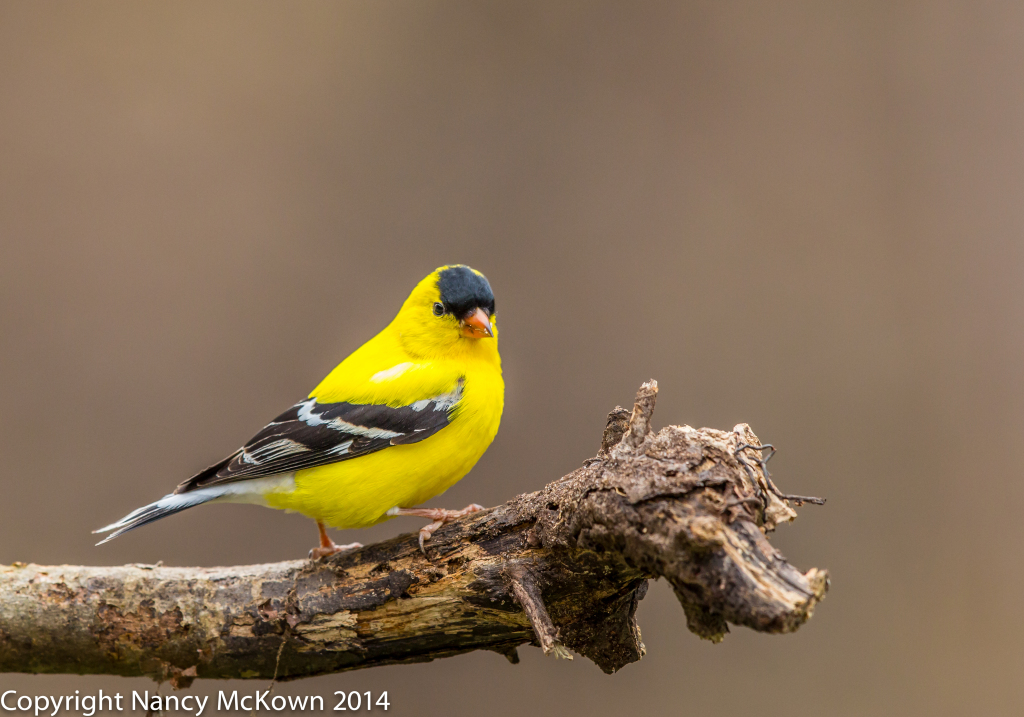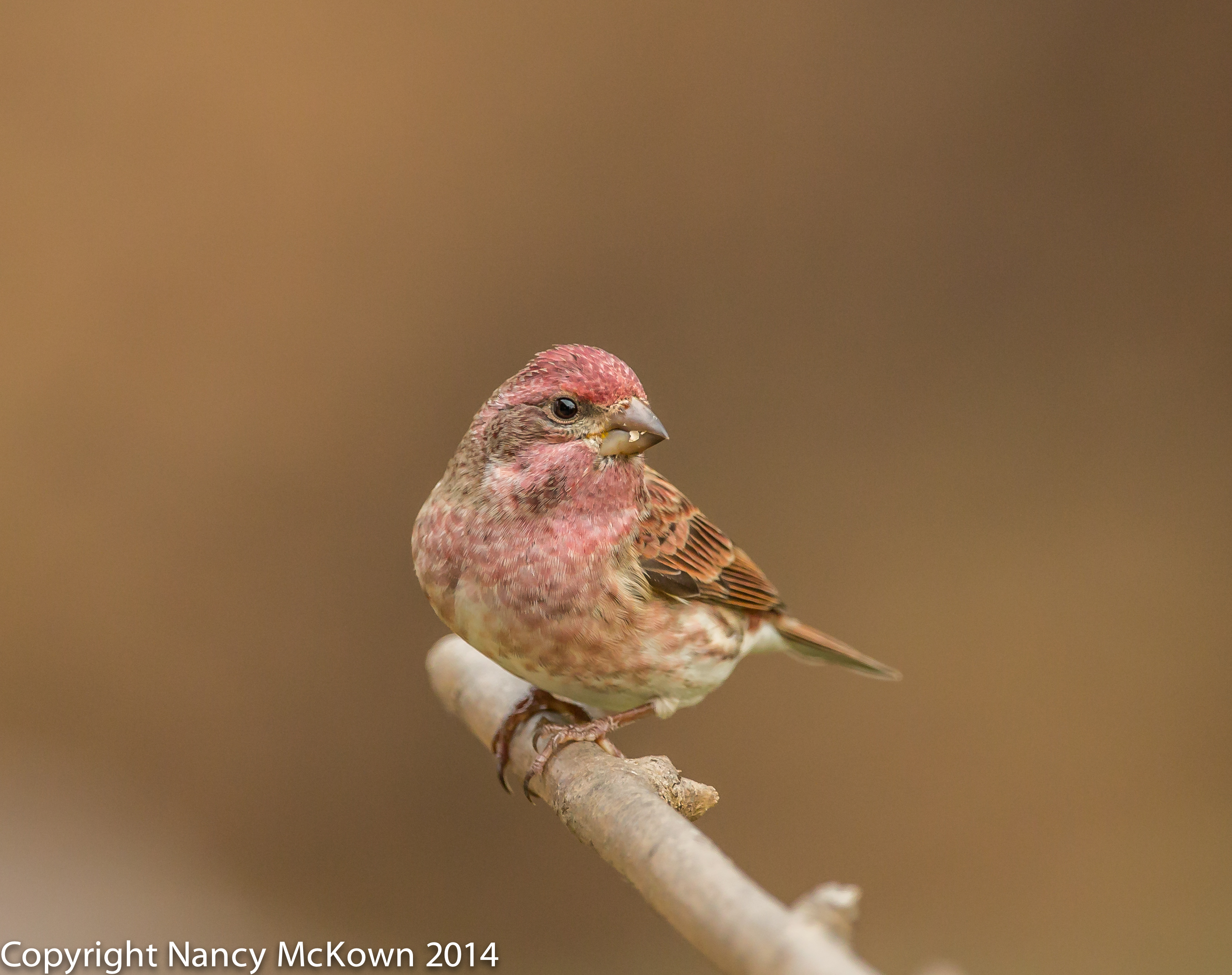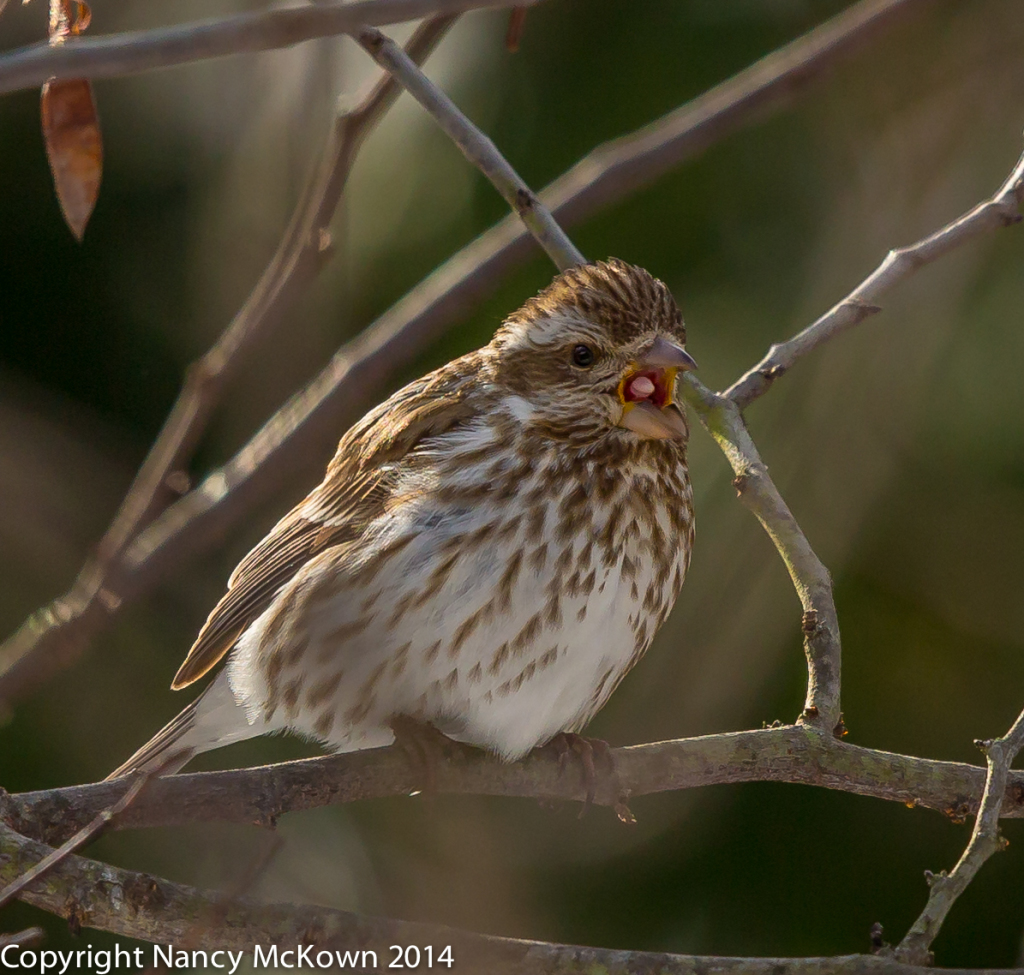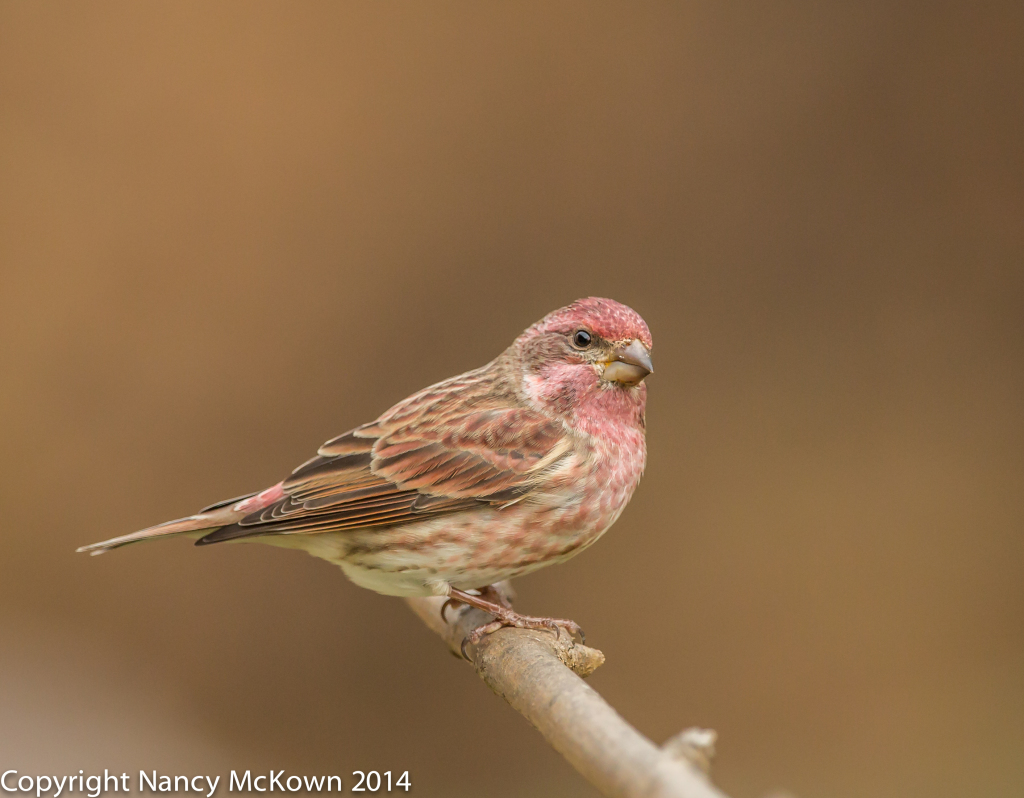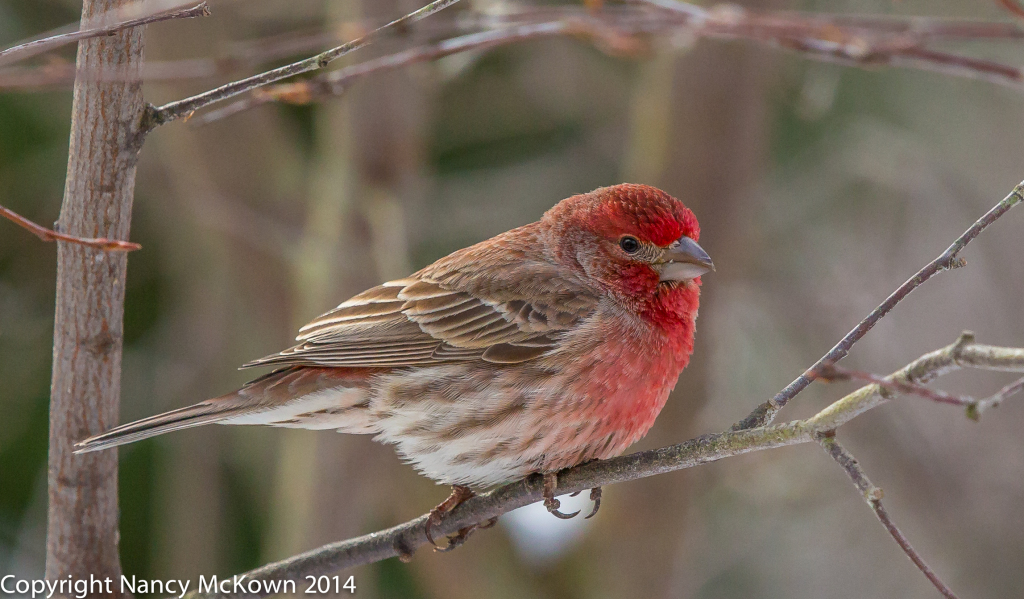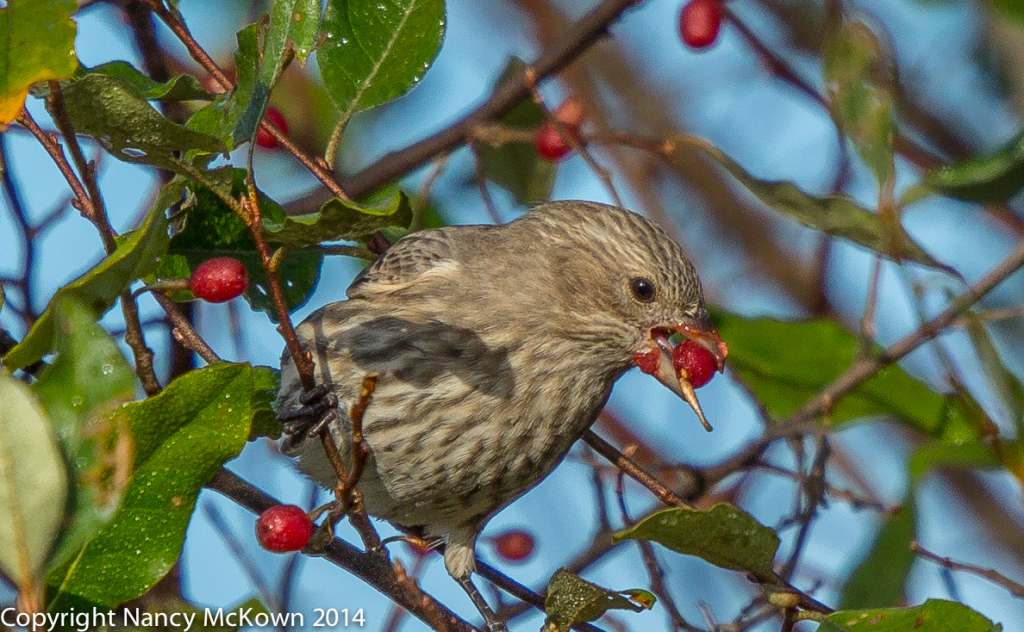Photographing An Eastern Purple Finch
Purple Finches are irregular visitors in SW Michigan. We hear them singing high in the trees (gushing and emphatic) and love to watch them as they cluster in with the other finches at the feeders. When they do come, they stay only a few days.
In the Spring, the raspberry feathers draping the male Purple Finches glimmer in the sun. (This fresh breeding plumage makes it easier to tell Purple Finches apart from the more numerous and year-round House Finches). The females and immature birds sport crisp brown and white facial marks, not unlike the patterns on the female Rose Breasted Grosbeaks, who come to nest in our yard in early May.
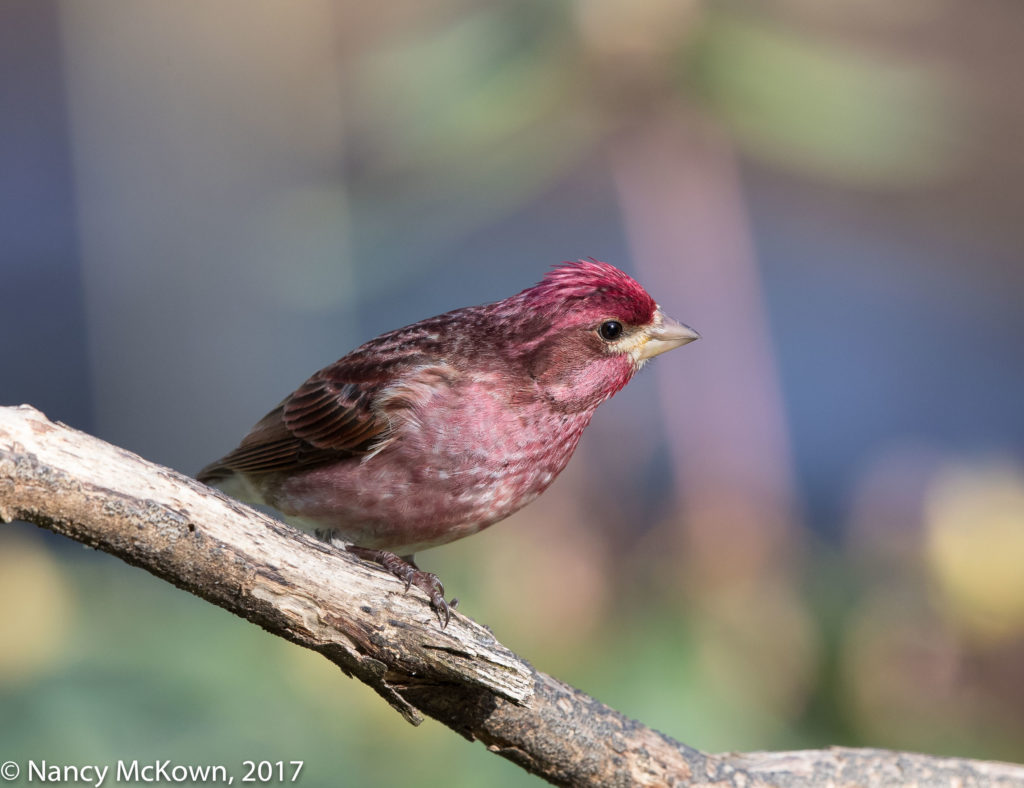
Colorful, Haphazard and Somewhat
Distracting Background
ISO1250; f/8; 1/400 Second
Focus Point Sensors
For unpredictable and highly active birds like Purple Finches, engaging the camera’s army of focus points (primary/secondary and cross type) to quickly acquire sharp focus is a good idea. (NOTE: This assumes that you’d rather use the camera’s multiple focus points rather than frantically chasing the bird around the frame with one central point.) The complex array of focus point sensors connects, communicates and exchanges data with other systems in the camera to weave together an almost immediate, very precise and user directed autofocus.
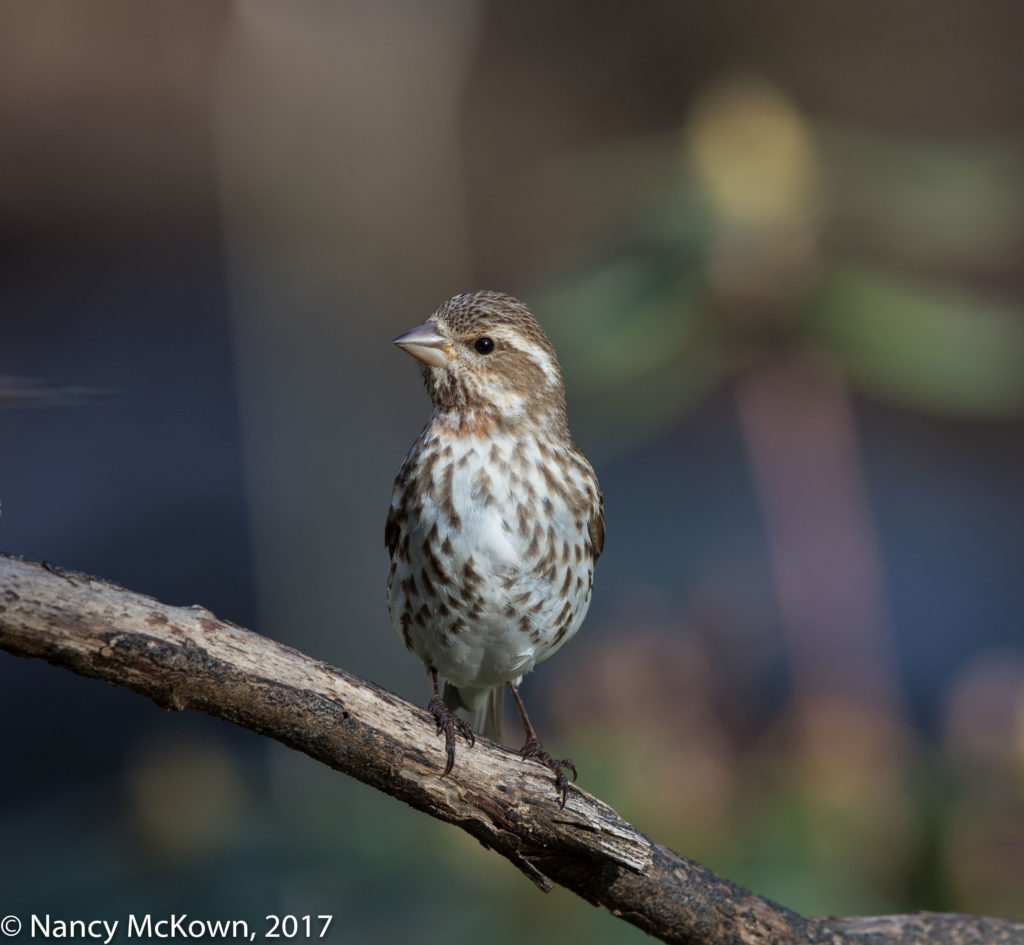
or Immature Male.
ISO640; f/8; 1/400 Second
It’s Not Magic
This process seems magical to me…so it is not surprising when I make assumptions about the capabilities and connectivity of the focus system that are just wrong.
What I know about the auto focus process on modern dSLR cameras:
- Canon’s Al Servo focus mode puts the lens on high alert for movement. Designed to work hand-in-hand with whatever focus points are activated, it efficiently adjusts and readjusts focus the second it senses motion.
- Empowering a mass of auto focus points without specific instructions can cause problems. It is advisable to pair the engaged focus points with an intelligent tracking mode that predicts movement and direction (mathematically); and then configure the behaviors that tracking mode should follow.
- Judiciously choosing a selection of auto focus points helps the camera decipher what it sees. It takes practice (under pressure) to merge focus points into groupings with the rocker switch .
- Adequate light and contrast are necessary for a wide array of focus points to work.
- Maximum aperture on a lens is integral to focus – the more light it lets in, the more responsive the focus sensors.
- Restricting the lens to hunt limitations or preset focus limits the area of focus and speeds up accurate focus.
- Restricting the light metering mode narrows focus point activity.
- Engaging your camera’s extra sensitive cross-type auto focus point sensors, (within zones or not) allows autofocus to read across vertically and horizontally placed lines for more precise focusing.
- This highly configurable mass of focus points automatically re-orient (vertically or horizontally) if the camera is rotated- assuming you’ve set this function in the menu.
- Focus point tracking sucks up battery power.
- Even with all this user preparation combined with the camera’s complex and predictive algorithms governing movement and focus, ultimately only one little soldier point will be called upon to make the focus call.
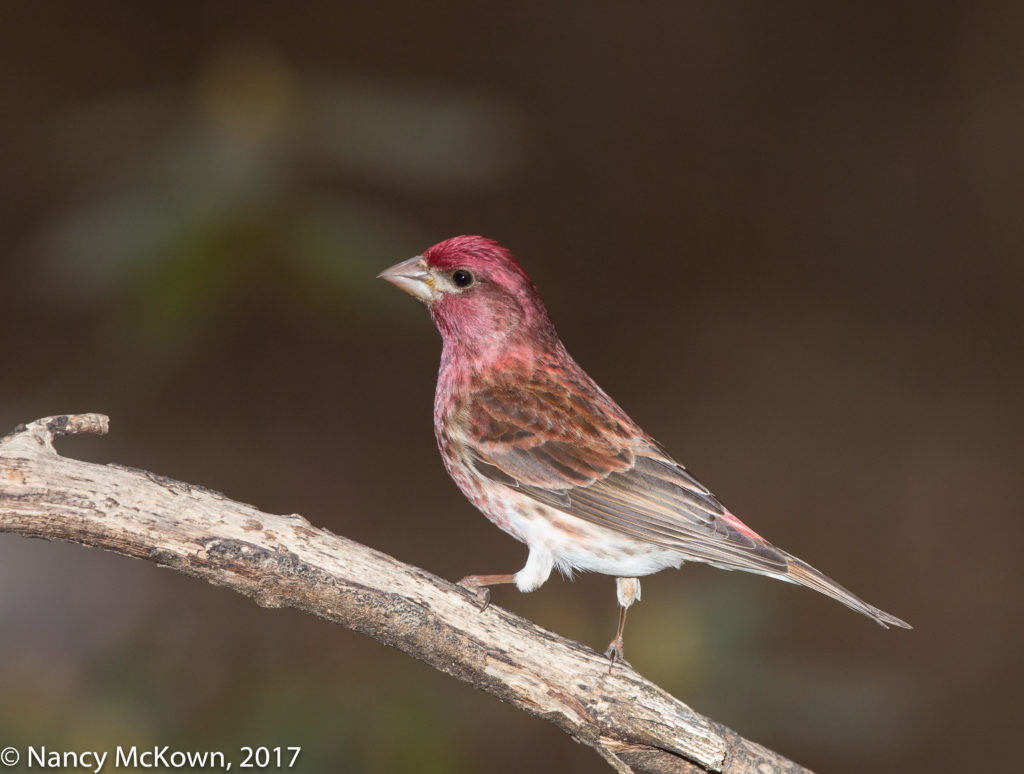
Early Evening Profile Shot.
Flash Engaged
ISO400; f/9; 1/250 Second
Do Autofocus Points Work With DOF?
I had assumed that depth of field calculations would be included in all the focus point sensor math. After all, locking down accurate focus is the goal and the camera and lens are interacting in a very sophisticated way. But that assumption is not logical.
Through the viewfinder, the photographer sees an assortment of things at a variety of distances. No matter how many AF points light up, the camera will follow specifications set up in the menu and do the math on the distances to ultimately select one point upon which to lock focus -most likely the closest object. This one chosen distance is the point upon which the lens must physically position itself to focus. The specific aperture that you (or the camera) select makes no difference to the auto focusing calculation process….even though it will most certainly affect your range of focus….ie, how much your subject (in front of and in back of the chosen focus point) will be in focus.
Question Your Assumptions
So why did I think that depth of field would be integral to the complicated algorithms made by the auto focus system? Just because connecting the two can lead to more completely focused subjects doesn’t mean the camera is going to automatically do that for you.
I think it’s important to question the attitudes, beliefs and assumptions that a photographer brings to the art and science of bird photography. It’s a clarifying exercise well worth the effort.

